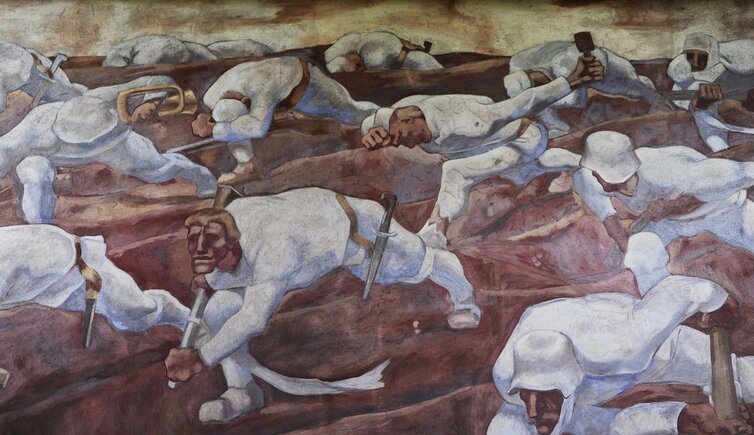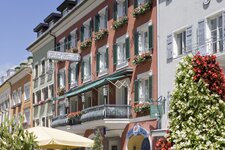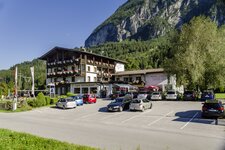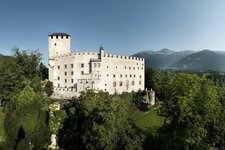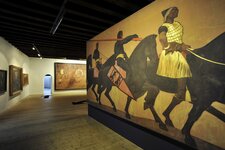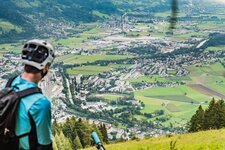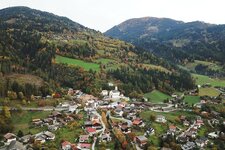His works mainly concentrate on scenes of WWI and most of his artworks are anti-war masterpieces
Albin Egger-Lienz was born to the unmarried mother Maria Trojer and Georg Egger in Striebach at Lienz in 1868. He was baptized Ingenuin Albuin Trojer. Only in 1877 he was officially allowed to bear the name Egger. His first teacher was his father who was a church painter. From 1884 to 1993 Albin Egger-Lienz studied at the Academy of Fine Arts in Munich where he was taught by Karl Raupp, Gabriel von Hackl and Wilhelm von Lindenschmit d. J. From 1894 Albin Egges worked as free artist in Munich, following his model Franz von Defregger.
In 1899 he moved to Vienna and married Laura von Möllwals. One year later he became a member of the Künstlerhaus (House of the Artists). Additionally he was co-founder of the "Hagenbund", an Austrian group of artists that was active until 1930. This was the time when Albin Egger-Lienz was awarded with the bronze medal at the World Exposition in Paris for his piece of art "Feldsegen". In 1902, however, the Kaiserpreis was awarded to him for this masterpiece "Nach dem Friedensschluss". In 1909 he became a member of the Vienna Secession, also known as the Union of Austrian Artists, only 7 years later he quit his membership.
In 1912 he started teaching at the art college of Weimar, but soon after, in 1913, he settled down in S. Giustina at Bolzano, where he worked as free artist. He taught at the school of arts in Chiusa. From 1914 to 1917 Albin Egger-Lienz was called up for military service. In this time he produced this shaking and hortative masterpieces on soldiers, such as "Den Namenlosen" (1914). In the last years of age the artist was declared honorary doctor of the Universtiy of Innsbruck and honorary citizen of the city of Lienz. Egger-Lienz died at the Grünwaldhof at S. Giustina (Bolzano/South Tyrol) on November 4, 1926. Bruck Castle, the Regional Museum Lienz, exhibits his masterpieces.
(in the picture: fresco in the Memorial Chapel for Soldiers in Lienz)
